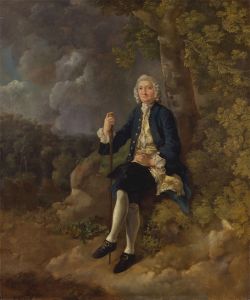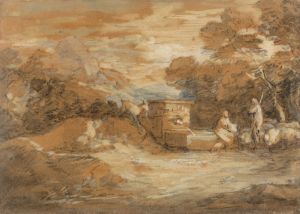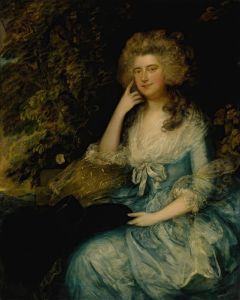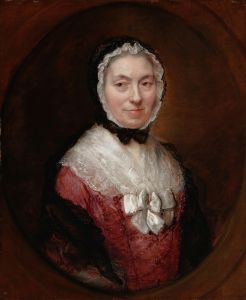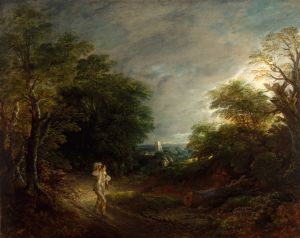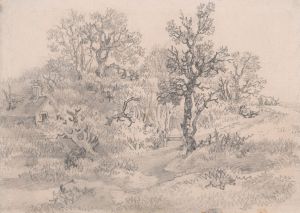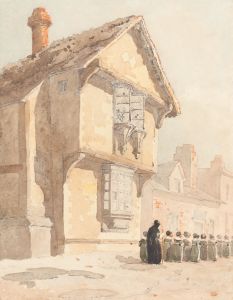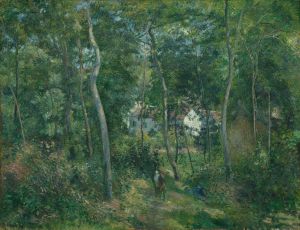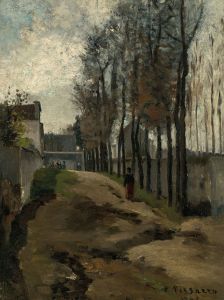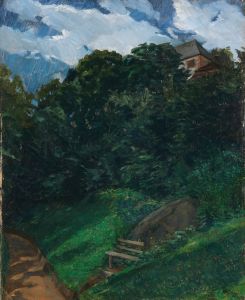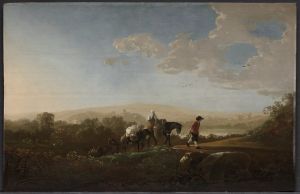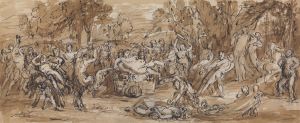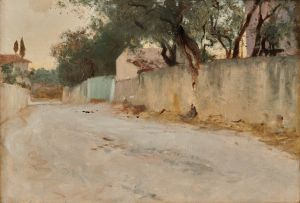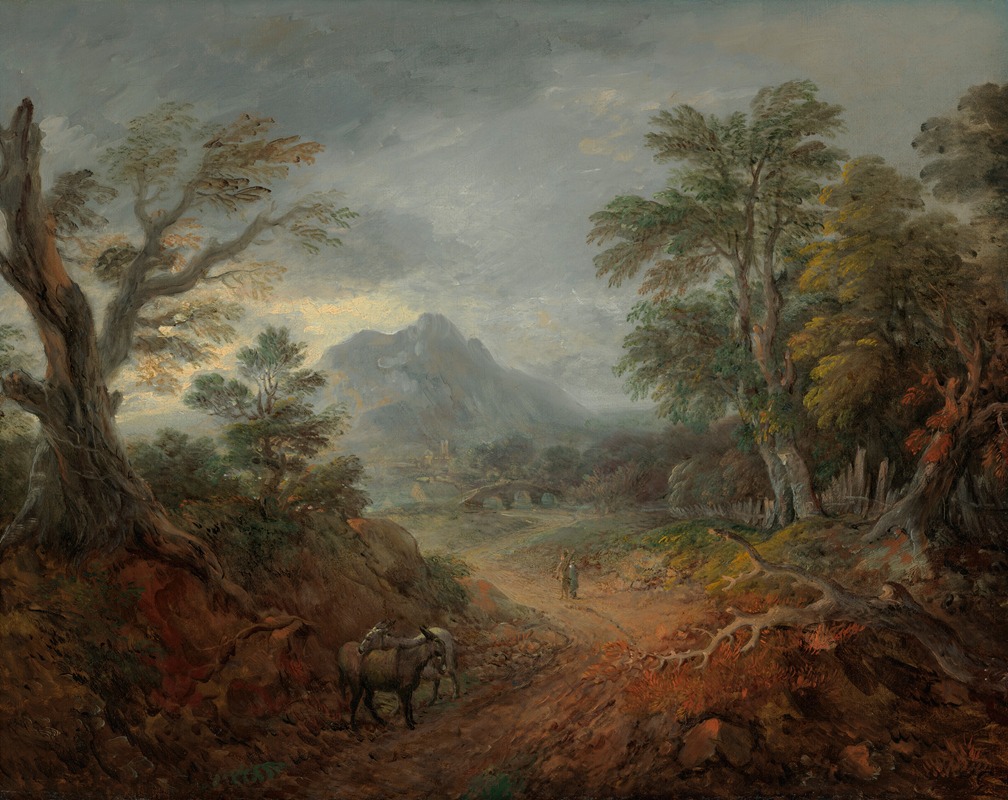
A wooded landscape with donkeys and figures on a path
A hand-painted replica of Thomas Gainsborough’s masterpiece A wooded landscape with donkeys and figures on a path, meticulously crafted by professional artists to capture the true essence of the original. Each piece is created with museum-quality canvas and rare mineral pigments, carefully painted by experienced artists with delicate brushstrokes and rich, layered colors to perfectly recreate the texture of the original artwork. Unlike machine-printed reproductions, this hand-painted version brings the painting to life, infused with the artist’s emotions and skill in every stroke. Whether for personal collection or home decoration, it instantly elevates the artistic atmosphere of any space.
Thomas Gainsborough's painting "A Wooded Landscape with Donkeys and Figures on a Path" is a notable work by the renowned 18th-century British artist, celebrated for his landscape and portrait paintings. Gainsborough, born in 1727 in Sudbury, Suffolk, England, was a leading figure in British art during the Rococo and early Romantic periods. He is best known for his portraits, but his landscapes, such as this one, also hold significant importance in his oeuvre.
This particular painting, "A Wooded Landscape with Donkeys and Figures on a Path," exemplifies Gainsborough's skill in capturing the natural beauty and tranquility of the English countryside. The artwork depicts a serene rural scene, featuring a path winding through a wooded area. Along the path, figures are seen accompanied by donkeys, suggesting a moment of everyday life in a pastoral setting. The composition is characterized by its soft, naturalistic colors and the gentle interplay of light and shadow, which are hallmarks of Gainsborough's landscape style.
Gainsborough's landscapes often reflect his deep appreciation for nature and his desire to convey its beauty and calmness. Unlike some of his contemporaries who focused on dramatic or idealized landscapes, Gainsborough preferred to depict scenes that were more intimate and realistic. His approach to landscape painting was influenced by the Dutch landscape tradition, particularly the works of artists like Jacob van Ruisdael, as well as the picturesque qualities of the English countryside.
In "A Wooded Landscape with Donkeys and Figures on a Path," Gainsborough employs a loose, expressive brushwork that adds a sense of movement and life to the scene. This technique allows him to capture the fleeting effects of light and atmosphere, creating a dynamic and immersive experience for the viewer. The use of color is subtle yet effective, with earthy tones dominating the palette, enhancing the naturalism of the scene.
The figures and donkeys in the painting are integrated harmoniously into the landscape, suggesting a symbiotic relationship between humans and nature. This theme is recurrent in Gainsborough's work, reflecting the artist's belief in the inherent beauty and simplicity of rural life. The painting invites viewers to pause and appreciate the quiet, unassuming charm of the countryside, a sentiment that resonates with Gainsborough's own love for the rural landscapes of his native England.
Gainsborough's landscapes, including this one, were not always as commercially successful as his portraits during his lifetime. However, they have since been recognized for their artistic merit and contribution to the development of landscape painting in Britain. "A Wooded Landscape with Donkeys and Figures on a Path" is an example of Gainsborough's ability to blend his technical skill with a deep emotional connection to his subject matter, resulting in a work that continues to be admired for its beauty and tranquility.
Today, Gainsborough's landscapes are appreciated not only for their aesthetic qualities but also for their role in the evolution of landscape art. They offer insight into the artist's vision and his ability to capture the essence of the natural world with sensitivity and grace. "A Wooded Landscape with Donkeys and Figures on a Path" remains a testament to Gainsborough's enduring legacy as one of Britain's foremost landscape painters.





